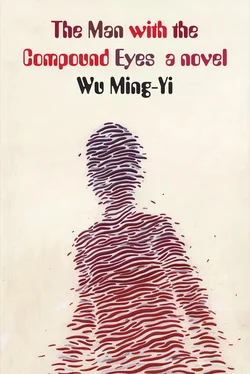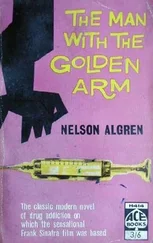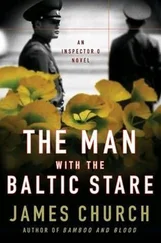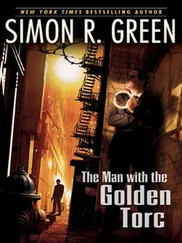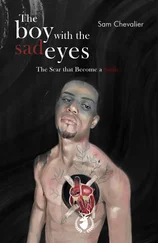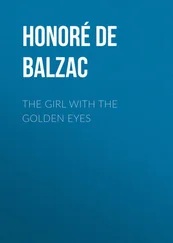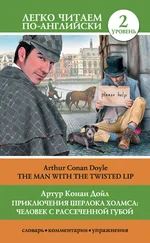Not especially linguistically inclined, Toto had amazing visual acuity. Alice remembered one time when they went out for spaghetti, Toto picked up the menu pencil and started tracing Thom’s climbing routes on the paper table cover. For the longest time Alice and Thom did not realize it was a route map. Finally, while they were sipping seafood bisque, Thom exclaimed “Hey isn’t that the Nenggao Traverse?” The two of them were so happy they cried. They would not let the server take away the dirty cover. They took it home and framed it. It was still hanging on the wall in Toto’s room.
From six years of age, Toto often tagged along with Thom on his hikes, but maybe because he was still just a kid he was not as crazy about climbing as his dad. Even so he had marathon endurance, and mental fortitude to match. It seemed all he wanted to do was check the climbing routes he’d seen in different books, and take his field guides along so he could identify insects. Sometimes he’d sit in his room and read the field guides all day long. Toto could do realistic pencil sketches of insects, with every branch of each antenna clearly differentiated, even at life size. Thom and Alice bought as many field guides for him as they could. There were shelves of them, hundreds in all, in several different languages (Thom bought some Danish ones). There were ordinary insect, bird, starfish and spider guides, and special guides to footprints, mammal excrement, tree bark, dragonfly and damselfly wings, fern spores, and so on and so forth.
Though Alice wasn’t so passionate about field guides, she always thought they were amazing things. A field guide seemed different from a work of literature. There’s no spoor to guide you when you take a walk in the fictional woods, and repetition is a sin. While natural science seems to have developed through humanity’s gift for identification, and then using our reason to create principles for the classification of the myriad creatures of the world, placing special emphasis on certain subtle anatomical unities when discriminating kinds. Alice intuited that there was something poetic in the field guides, and if you read them carefully you could identify the principles by virtue of which human beings understood the world as well as some hints about human nature. Maybe someday Toto might become a certain kind of poet. Did he not deliver some poetic-sounding lines to these insects?
To Alice it seemed that the bigger Toto got the more species he recognized, that every time they went out he got a little taller and more mature. He was starting to explore the world in all its amazing intricacy and extreme regularity. Alice would read the same books as Toto and remember the same insects. Whenever she had a question she would e-mail Ming. Apparently a lonely fellow, Ming always gave her a quick reply. The only thing she couldn’t manage was mountain climbing. She could climb the hills around town to get water, but she had a phobia of mountains above a certain height.
Alice would never forget an accident Toto had in grade two. He got bitten by a snake one day while playing in the bushes. Not knowing what kind of snake it was, they took Toto to several hospitals to inject him with various antidotes, none of them at all effective. Toto was in a coma for nearly a week. Alice prayed with all her might to all the gods she’d ever heard of, until finally he woke up. She sometimes felt that Toto had really died that time. For a long time, Alice would not let him take part in any outdoor activities, but for a boy like Toto this was just a form of torture. Even more importantly, Thom didn’t approve: he thought that no matter how dangerous it might be Toto should try to survive in the wild as much as possible.
Alice was flipping through the Illustrated Cat Encyclopedia , imagining Toto was still by her side listening to her explanation. The classification system this encyclopedia used was really interesting: you cross-referenced the length of the coat and the shape of the face. Alice kept turning the pages but could not find a cat that resembled Ohiyo. Was it because she was too young, and her distinguishing features had not appeared yet? “It’s just an ordinary cute little black-and-white ‘mee-kuh-ssi,’ ” said the nurse — a Mandarin approximation of the English word “mix.” Which just meant it was a crossbreed. But as far as Alice knew, housecats were all one species. After all, couldn’t any couple of housecats mate and produce a litter of mixes? It seemed people only divided cats into breeds as a way of investigating the cat world or establishing a ranking system for the cats. The logic of the system was human, while the cats had their own logic and pecking order and played by their own rules.
So were inferences about nature really concerned with the laws of nature? Or merely human laws?
Alas, but this was the kind of linguistic vortex into which Alice’s literary training was always causing her to slip. Before she knew it, she had spent the whole afternoon leafing through the Illustrated Encyclopedia of Cats and almost all the other field guides on the shelves. Now she got the feeling that the world was composed more like a field guide than she had realized. Maybe she had gotten it wrong as a young woman in assuming the world was full of random occurrences. Maybe the world was neatly and intricately arranged, and everything was actually a twist of fate.
The next day, Alice stayed home watching Ohiyo. She’d never thought that you could get so engrossed just observing the various activities of a cat: Ohiyo asleep on the bookshelf, eyelids heavy, limbs dangling; Ohiyo padding near a leaf beetle that had flown in the window; Ohiyo with her huge round eyes open wide gazing attentively at Alice.
“So adorable.” Alice sighed. Everything had to change when you raised a cat. It was just like having a child. That evening Alice went to sleep with Ohiyo under her arm. Ohiyo was purring, dreaming about who knows what. But later that night, Alice had a dream of her own.
Just a month before, unable to go on alone like this, Alice had traveled to Japan for a course of “dream grabber” therapy. The dream grabber was a technology developed several years before by a team led by Professor Yukiyasu Kamitani, director of the Computational Neuroscience Lab at the International Advanced Telecommunications Research Institute. They used MRI to record people’s dreams. At first they could only display brain activity as simple geometrical shapes, but gradually they were able to image the data in the dream waves. The images weren’t photographic or videographic. They were more like the enigmatic patterns on a television screen when there is no signal. But the therapy was not available to just anyone off the street. It was a medical treatment, so you needed a referral from a medical specialist. Kamitani had done the research hoping to counteract the dream interpretation shows that flooded the airwaves and the internet, not anticipating that after he started offering his service the television and internet producers would copy him and add “dream grabber” shows of their own. All Kamitani could do was lobby for legislation controlling the use of such images. But the situation was already a mess. After all, in this day and age everyone needs something to grab hold of.
It was Reiko Matsusaka who had introduced Alice to the therapy. She was a translator and professor at a women’s university in Tokyo. Years earlier, Alice and Reiko had collaborated on the translation of one of Ming’s novels into Japanese. Both young scholars with a fervent passion for literature, the two of them had become online friends, meeting to discuss the intricacies of Chinese — Japanese translation. For instance, Reiko couldn’t understand the idiomatic Taiwanese expression “make-it-big-truck,” so Alice explained how Taiwanese people bought small trucks in the hopes of striking it rich and even asked the author how many cubic feet the engine would have and what model it might be on her behalf. Alice also guessed at the particulars of the male characters in the novel, because Reiko told her there were several different ways for a Japanese man to say “I.” It was so much more complicated than in Chinese.
Читать дальше
